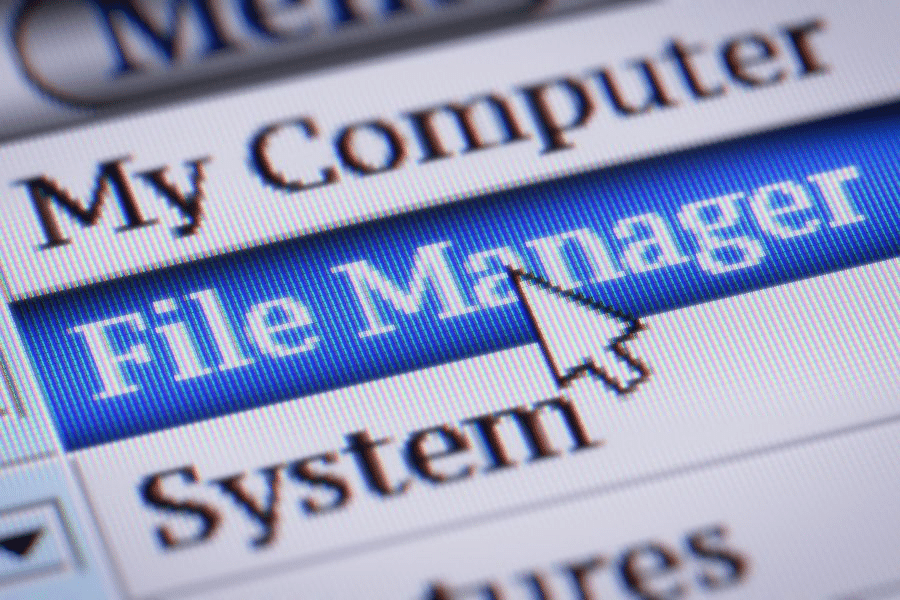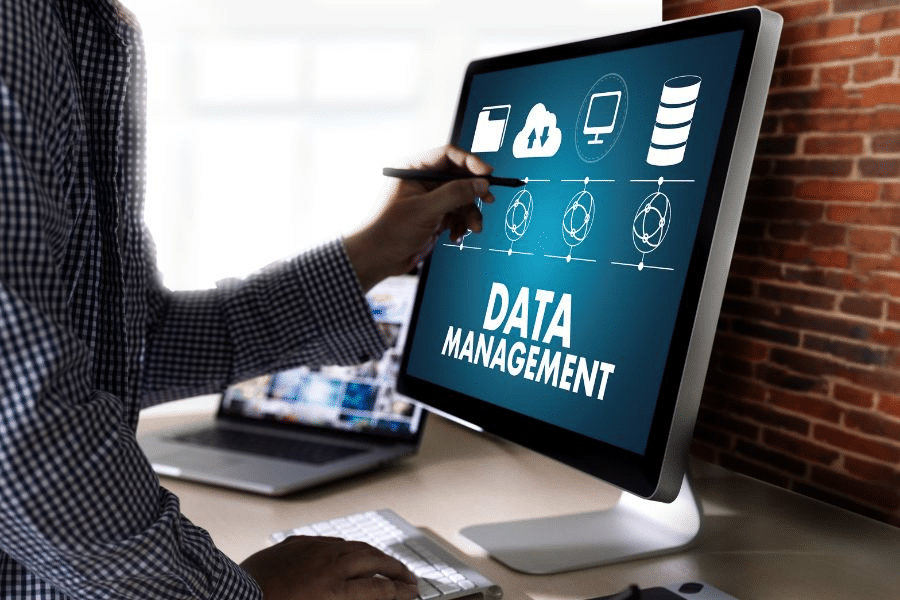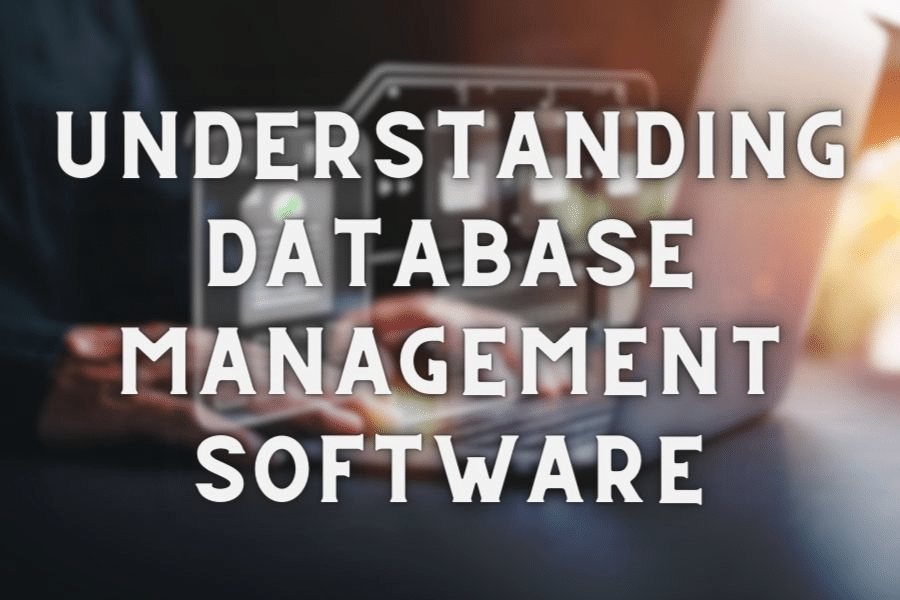Can you only manage databases that are simple enough? Need help to find database management software that fits your needs? You’re not alone!
Welcome to this blog, which will help you determine how databases work and choose the right database software. We will start by looking at different database management systems (DBMS) and what they do. We’ll help you understand the essential parts of this critical technology.
Imagine a world where you could choose the best database management software, streamline your data processes, and make your business operations more effective. With this blog, you’re taking the first step toward making that dream come true.
So don’t keep putting it off! Sign up for our newsletter to get your field’s latest news and trends. With just one click, you can learn how to use a database.
What Is A Database Management System?

A DBMS is software that makes it easy to manage a database. Users can get into the database and interact with the basic information stored there.
Actions can range from simple data queries to changing the database structure in a big way by defining database schemas.
DBMS also gives users a safe way to interact with a database. At the same time, without messing up with each other or losing the data and data integrity either.
Common Database Tasks In A DBMS

You can do many everyday data management tasks with a DBMS, such as:
Authentication and authorization need to be set up.
You can easily create user accounts, set up access policies, and change restrictions and access scopes.
With these features, admins can control what users can do to manipulate data, limit access to the underlying data, and monitor how users are managed in databases.
There are back-ups and snapshots of the data.
A DBMS makes it easier and faster to back up databases because it has an easy-to-use interface for managing backups and snapshots. You can also move these backups to places like the cloud to ensure they are safe.
They are optimizing performance.
DBMS comes with tools that can monitor how well databases work and let you make optimized indexes to fine-tune databases. I/O is used less when SQL queries are optimized and the database runs at its best.
Getting back data.
The DBMS provides a recovery framework with all the tools needed during a recovery process. It can quickly restore databases to their previous state, in part or whole.
A single management interface makes doing all these administrative tasks easier. Most modern DBMSs can handle different workloads through a single piece of software.
Even if the databases are in different places, also, they give entities a structured and easy-to-manage hierarchical view of every datum, consumer, faction, site, etc.
Components Of A Database Management System

Most database management tasks can be done with tools and parts built into all DBMSs. Even third-party tools and services can be used directly or through plugins with DBMS software.
Storage engine
In the DBMS, the storage engine is the most crucial part. It talks to the file system of the operating system to save information. The storage engine takes care of all SQL queries that interact with the database objects underlying data.
Query language
To make a database or get information from an existing one, you must use a language for accessing databases. A sound database management tools can handle at least one query language. Ideally, it is more than one. SQL and MQL are ways to talk to databases, but they do things differently.
Query processor
The link between questions from users and the database. The queries processing unit decodes user queries. It turns them into commands that the the database system can understand and use to do the right things.
Optimization engine
The optimization Engine lets the DBMS tell how well-optimized the database and queries that use it are. When combined with tools for monitoring the database, it can be a robust set of tools for getting the most out of the database.
Metadata catalog
A complete list of everything in the database is gathered together in one place. The DBMS stores its details and other things in the metadata catalog when an entity is made.
After that, you can use this document to Match user requests with the correct database entities. Give an overview of how the database is put together as a whole.
Log manager
In this section, all of the DBMS logs will be kept. The records will show who logged in and what they did, as well as database functions for backing up and restoring, and more. The person in charge of logs ensures they are saved correctly and are easy to find.
Reporting & monitoring tools
DBMS tools keep track of and report on what is going on. Reporting and monitoring tools let users track how databases are used, what users are doing, and other data.
Types Of Database Management Systems
There are many different kinds of DBMS, but the most common ones can be put into three groups.
Columnar database management systems
The main goal of this DBMS is to improve the speed of columnar databases. It can store information in columns instead of rows.
The columnar format is the format that some databases, like Apache Cassandra and Apache HBase, use.
Relational database management systems
This type of database management system is the one that most people use. Databases are used to talk about structured data that is stored in a table format with relationships that have already been set up.
They use SQL, also called “structured query language,” to talk to databases. Microsoft SQL, MySQL, and Oracle Database are the most well-known DBMS programs.
Document database management systems
The DoDBMS manages databases that store data in structures similar to JSON and have few or no connections.
Database operations are run using query languages like MongoDB query language. (MQL). DoDBMS has a lot of popular options, like MongoDB and Azure Cosmos DB.
Advantages Of A DBMS

The goal of making DBMS is to solve the problems that file systems have when it comes to storing and managing.
Also, for making data accessible, ensuring it was secure, and doing audits. By using a DBMS, people, and businesses can get several benefits, such as:
More security for data
DBMS lets you manage users. It can make sure they follow the rules for security and compliance management. Because only a few people can get into the database, it is safer and less likely that security will be broken.
Simple data sharing
DBMS keeps people from getting into databases all over the world. With this solution, users can do tasks that use databases.
They can do it without having to learn how to access them in a complicated way or worry about how safe they are. DBMS simplifies database user collaboration.
Data integration
Users can use DBMS to get a central view of databases that are in different places. It can manage them from a single interface instead of running them as separate entities.
Abstraction and freedom
Users can change how a database looks without changing how it works. The logical schema tells the relationships in the database how to work. So, businesses can add more databases without changing how their databases work.
You can also change the logical schema without changing the programs that use the databases.
Simplified backup and recovery system
Most databases have tools built in for backing up and getting data back. Still, DBMS offers centralized tools that make backup and recovery more accessible and better for the user. With features like this, keeping data safe is now easier than ever.
Management and monitoring in the same way
With DBMS, tasks for management and monitoring are done in the same place. It makes it easier for people who run databases to do their jobs.
Some of these tasks are making databases, making changes to the schema, reporting, and auditing.
Popular Database Management Software

There are many popular database management software options, and the best ones can change based on how easy they are to use, how well they scale, and how well they work. But, the three most popular and widely used database management systems (DBMS) are:
MySQL
MySQL is a relational database management system (RDBMS) that is free and open-source. Oracle Corporation owns it.
Structured Query Language (SQL) is used to organize and change data. It is used in many web applications, and content management systems like WordPress, Joomla, and Drupal often choose it.
PostgreSQL
PostgreSQL is a robust, open-source object-relational database management system. It focuses on being able to grow and meet standards. It works well and can handle advanced data types so that it can be used for complex applications and big projects.
Microsoft SQL Server
Microsoft’s SQL Server is a powerful and complete RDBMS. It works with a wide variety of business applications. It has advanced features like data integration, reporting, and analysis services.
It allows you to make it a popular choice. It is for businesses that need a scalable and secure database solution.
Besides these three, there are many other popular database management systems. You might be better off with Oracle Database, MongoDB, or SQLite depending on your need.
Future Trends in Database Management

As we keep exploring the digital frontier, several trends could change how database management is done in the future. Edge computing, which means processing data close to its origin, will improve real-time analytics and reduce latency.
This will make it possible to create new apps and services. Quantum computing is about to change how database encryption and query optimization work. This will make it easier to work with and understand data. This is because it is so good at making things better.
It also added AI and machine learning to database management systems to make them smarter. It will give them more innovative and more flexible query optimization, data indexing, and data compression. This will make it easier for these systems to work on their own.
Data security and privacy are becoming more critical, which means more advanced ways will be used to protect data. This work is the same as how homomorphic encryption and differential privacy work. Lastly, the growth of multi-model databases will help modern applications meet their different data needs. It can make data storage and management more flexible and cover more ground.
Frequently Asked Questions
What is database management software? Explain with the help of an example.
A database management system is software used to take care of databases. For example, MySQL, Oracle, and other commercial databases are very popular. They are used in many different ways.
What is the importance of a database management system?
With DBMS, businesses can give end users more access to data and help them share it across the organization. Because they can access the exact data they need, these end users can close sales faster and make quicker decisions.
What is a database management system and its advantages?
A Database Management System (DBMS) is software that lets both database administrators and users define, create, manage, and control who has access to a database.
DBMS allows multiple users to add, read, change, and remove information from a database. It is between the data and the programs.
Final Thoughts
This blog aims to help you make intelligent choices about affordable database management system. You need to know about the different types of database management systems and how they work. It will make it easier for you to choose the right software.
Remember that if you choose the proper database management software, your data processes will be better. It can help you get more done and help your business grow.
In the world of technology, which is constantly changing, it is essential to keep up with the latest changes and trends in database management.
Check out our online platform to learn more about managing software and databases. Keep the connection going by talking, sharing, and asking questions. We will keep looking for ways for businesses of all sizes to use database management software to its fullest.





